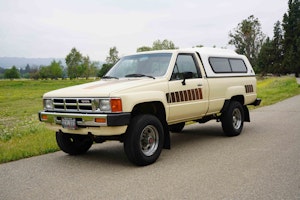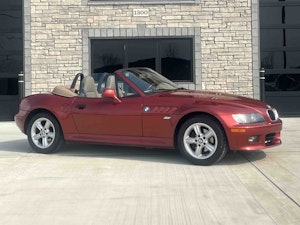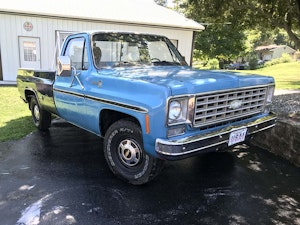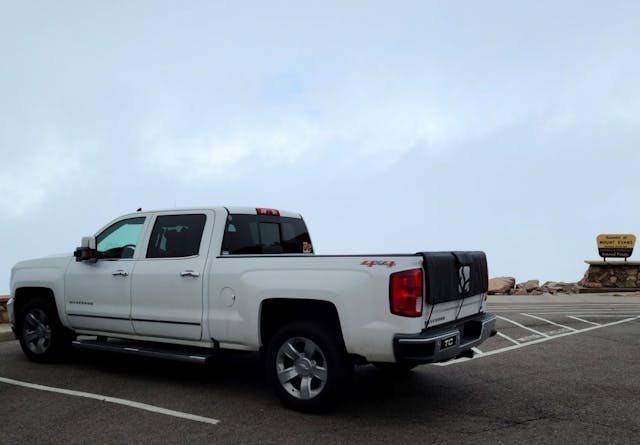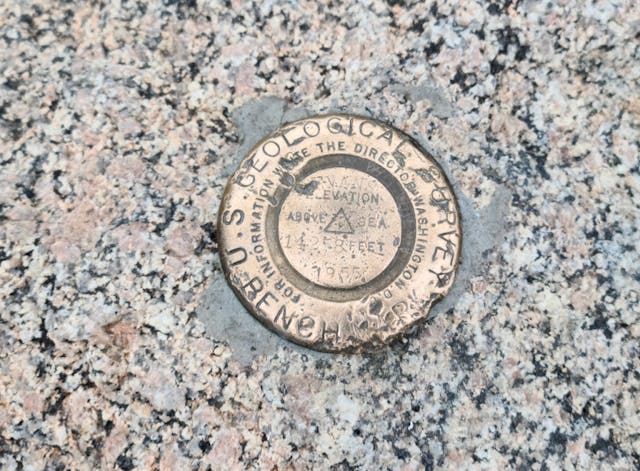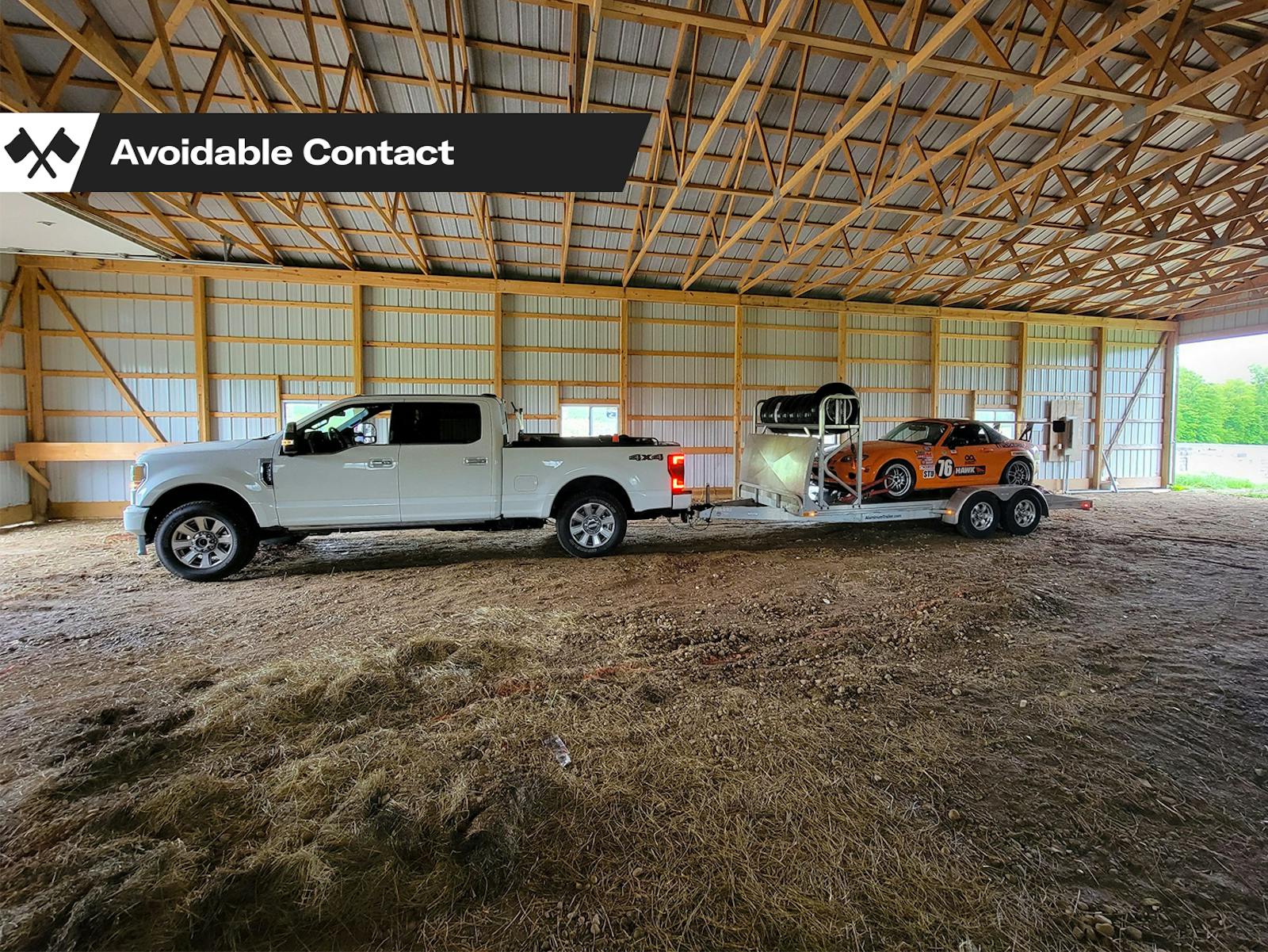Media | Articles
Avoidable Contact #113: Just doing what Dinah told me to do, and then some
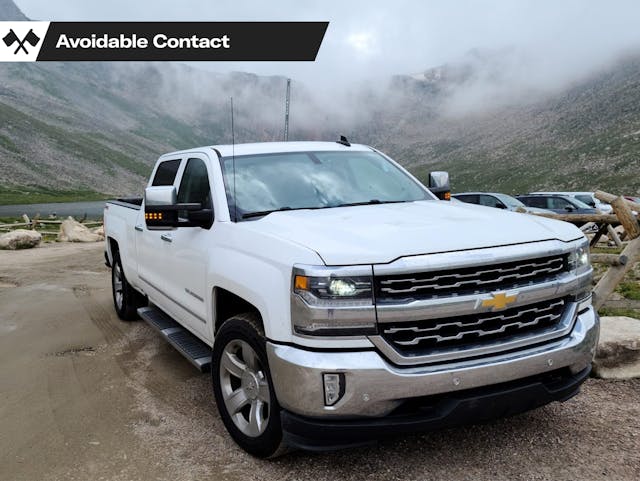
At the Valvoline, the kid blinked and asked me for the mileage one more time.
“76,576 miles,” was my response.
“OK,” he mused, “because it says you were here May 17, which is like 80 days ago, and you had … let me read this again … 66,260 miles on it then.”
“Oh … that’s totally right. That’s why I’m getting the oil changed again, you see.” As a matter of fact, the oil-life-monitoring system in my 2017 Silverado had been crying for a change since we’d started climbing Raton Pass eight days ago, but part of my rationale for putting full-synthetic in the truck is that I can occasionally award myself a small grace period in such matters. The mighty 6.2-liter L86 V-8 is remarkably easy on its oil anyway; a check at the 9000-mile mark revealed a full sump’s worth of light, sweet, not-at-all-crude lubricant that was transparent enough to show the crosshatching on the dipstick. Contrast this to the EcoBoost V-6 in my Lincoln MKT, which tortures its oil into a sludgy, midnight-black froth seemingly as I pull out of the Valvoline bay.
Two months and change, driving about 10,000 miles, everywhere from sea level to 14,110 feet in the air, alternately pulling a race car and hauling mountain bikes. From New Hampshire to New Mexico, and everywhere in between. Seeing the USA, in my Chevrolet, the way Dinah Shore intended.
Marketplace
Buy and sell classics with confidence
Ah, but it’s so much easier now, isn’t it? For 1953, Chevrolet offered families a choice between the 108-horse “Thrift King” coupled to a manual transmission or the 115-horse “Blue Flame” with a Powerglide. Both of them were variants on the old “stovebolt six,” although the “Blue Flame” had the remarkable advance of pressurized lubrication. Power steering was a new-for-1953 option; power brakes couldn’t be had at any price. The speedometer promised 110 miles per hour, an empty promise indeed. A nice Bel Air coupe variant could run you just over two grand.
Compare this to my Silverado—420 horsepower, power everything, rock-solid at 90 mph with plenty of power left to pass. Practically drives itself, although some of the whoops on I-70 outside Denver will put the whole truck in the air, or at least at the full extension of the dampers, at full speed. It’s quiet. Has more interior room than a ’70s Caprice. Returns about 18 mpg at the aforementioned 90 mph. Drop down to something less hurried, like the 70 mph that would have been an impossible dream for any cross-country drive in 1953, and you get 22.5 mpg. And with 76,576 miles on it, the whole thing feels pretty close to brand new. It’s no trick to see the USA in the thing, and never darken the door of a service garage along the way.
As long-time readers may recall, around this time last year my son and I drove a new-generation Ram 1500 from Ohio to Tahoe, California, and back. (That occasionally painful voyage is chronicled here, in Part One and Part Two.) After the fact, with the memories of our successes and failures fresh in our minds, John and I decided to adjust our agenda for 2021. The ambitious cross-country blast to California would be replaced by a series of mountain-biking adventures centered around Colorado and New Mexico. We’d drive less, ride less, and rest more.
This less ambitious 13-day plan laid out, and considering a likely total mileage in the range of 3800 or so, I decided to take my own truck rather than borrow a press loaner. This turned out to be a very good idea, for reasons I’ll detail below. We packed four bikes, two guitars, about a hundred pounds’ worth of equipment, and one made-in-the-USA 50-quart Pelican cooler into the Silverado, then headed west.
Right from the beginning, we had a bit of a problem; John was recovering from a bike crash at Snowshoe Mountain the week before that had thrown him about a dozen feet to land, ragdoll fashion, in a rock garden of sorts. Nothing broken, plenty strained. He had trouble lifting his right foot off the ground as we loaded the truck, but I trusted that he’d heal up in the two days to follow, which proved to be the case.
The 18-hour drive to Denver was uneventful; my decision to rent a fully-gentrified uptown condo proved less so. At 241 inches, the Silverado didn’t fit into any of the available parking spots; after some fruitless searching I had to let it hang out of the longest available space in front of the building, its tailgate and rear bumper over a few inches of the sidewalk. I knew the street people of Denver would take this amiss, and indeed I saw one of them furiously kicking the truck in the right rear quarter of the truck bed almost immediately after I locked up and walked away. Mind you, we were right next to a police station, something I no longer considered to be comforting after the third time I heard the occupants of a passing car pitch a glass bottle at the parked cruisers while screaming something that sounded oddly like “DUCK 12!”
Yes, despite the above I was still stupid enough to take my 12-year-old son for a night-time street ride to the hibachi grill two miles away. All went well until I rode my bike too close to some fellow’s dog, but that’s a story for another time. Let’s just say this: tensions on the streets of Denver are way beyond anything you’d expect from a casual perusal of “Rocky Mountain High.”
What a relief to get over the Raton Pass and over to Angel Fire for a few days of riding the first-rate downhill bike park there. If you visit just one lift-served place in your whole life, with ski or bicycle, make it Angel Fire. For reals. We had a lovely time despite heavy rain in the afternoons. John cleared the “Candyland” tabletops; I had to settle for jumping the obstacles on a trail named “Hungry Hippo.”
“That’s you,” my worthless son said. “You’re a hungry hippo.”
“Yeah, well, at least my father still loves me.”
In Colorado and New Mexico, the Silverado reigns supreme over its competitors from Ford and FCA, but perhaps it shouldn’t. Even at the one-mile elevation of Denver, the 6.2 comes off as a little breathless. Get up to the 9820-foot figure of Bobcat Pass, which is the only way to get to the only restaurant owned and operated by Michael Martin Murphey of “She ran callin’ Wildfire!” fame, and the damn thing feels positively Thrift-King-ish. Any sane fellow would hold his nose and buy an EcoBoost F-150, but the locals in Red River and Eagles Nest line the streets with Chevrolets nonetheless. It’s worth nothing that you can get a Silverado nowadays with a boosted-up 310-horse 2.7-liter four-banger for about the same price as the plain-Jane 5.3-liter V-8. If you live at altitude, that’s a choice worth making. I ran the numbers and found out that my 6.2 is probably making just 304 horsepower on Bobcat Pass.
At the top of Mount Evans, the news is even more dire; supposedly, the 6.2 turns out just 241 horsepower, about what you’d expect from a healthy Vortec 5.7 in a ’90s Silverado. Not that you really need much power to get through a bunch of 15-mph switchbacks. John and I bought a timed ticket that had us arriving at the summit when it was thickly shrouded by fog. Thankfully the gale-force winds brought us a clear moment in which we could see the snowcapped tops of mountains below us. “Lonesome don’t seem like much when you’re this high,” I said, quoting Steve Earle, but in point of fact there was no way to be lonesome up there. As with every other park, lake, mountain, and point of interest in Colorado at the moment, the 14,110-foot-elevation parking lot of Mount Evans was packed to bursting with people who were determined to see a bit of nature before the government shuts the party down once more. John and I climbed to the actual summit in a wagon train’s worth of people; it was like a community-theater re-enactment of Into Thin Air.
The last few days of our trip were spent riding Trestle Bike Park outside of Fraser, Colorado. John’s goal was to clear every jump in the double-black-diamond trail known as “36th Chamber.” I wanted to encourage him in this, but I couldn’t manage to accomplish the task myself, so I called in former Ohio BMX local and current Strava King Of The Mountain for Tresle, Nick Smith. They got it done on their third run through, including the 40-foot-plus “bridge gap” at the end of the trail.
With all goals accomplished and no bones broken, we turned the Silverado east for the 1402-mile drive home. Well, there was one injury. Pedaling as hard as you can for five hours at 10,900 feet can make you a bit stupid, which is probably how I forgot the waist-height concrete barrier in front of the Silverado’s nose in the Trestle parking lot. Had I been driving a press car, I’d have an uncomfortable call to make right now, but since I did it to my own truck, I just have to save up for a $556 front bumper. Truth be told, it doesn’t really look all that bad. Like the various scars and scrapes we’ve already applied to the Silverado’s bed, this creasing in the chrome front bumper just underlines the thing’s role in our lives: tow rig, bike hauler, all-around sufferer of slings and arrows, family vehicle par excellence.
Which reminds me. No disrespect to the current Malibu and Impala, assuming they are still in production, but the Silverado is clearly the inheritor of the Chevy 210’s mantle as American Family Car For The American Family. Yes, we could have made this trip in a car, but we would have had to festoon said car with bike racks, top boxes, and enough protective rubber mats to furnish an insane asylum. Everything (but parking) would have been more drama, more hassle, more time. Our various off-highway excursions, though they were short and mellow, would have been additionally worrisome. Last but not least, we would have been even more invisible to the truckers who occasionally make I-70 feel like a game of pinball waiting to happen.
Many of my friends in the media, both automotive and general-interest, have settled on the privately-owned half-ton crew-cab pickup as an embodiment of everything they detest about America. “LARGER THAN SOME WORLD WAR II TANKS!” they scream, as if that meant anything in particular. (Have you ever sat in a World War II tank? Most of them would be classified as “Subcompact” by the EPA, based on interior volume.) They love to complain about the “hyper-aggressive” grilles of modern trucks—but look at the toothy chrome grin on that 1953 Chevrolet in Dinah Shore’s TV special, why dontcha?
It’s true that John and I could have accomplished our trip in a smaller truck … maybe a Ford Maverick, one of the few new vehicles that is very much on my personal-purchase radar right now. That being said, we don’t have the luxury of owning a bunch of different trucks for different tasks. My Silverado pulls our race cars, hauls engines and transmissions to and from our race shop, and brings everything from mulch to furniture home without complaint. Ten years from now, when I’m an empty-nester and standing on two freshly-installed plastic knees, I doubt I’ll need something like this. Until then, however, this 76,576-mile Chevrolet remains the best way for us to see the USA.


